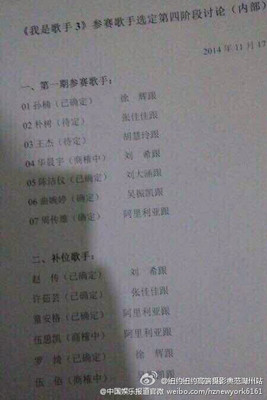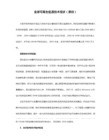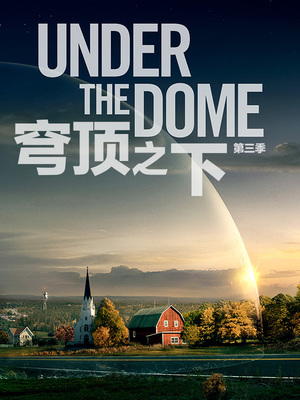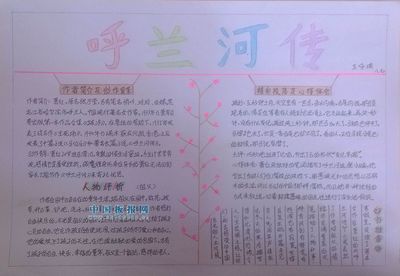It was a cold Sunday afternoon in Shanghai when my partners and I met Mr Huang, CEO of a large shoe factory in Wenzhou. The aim of this meeting was to explore the possibility of investing in Mr Huang’s company. His sales and production figures were impressive but the earnings were way too low – 3% ROS (return on sales).
一个寒冷的星期天下午,我和我的伙伴在上海与黄先生——温州一家大型制鞋厂的老板会面。这次会谈是为了探讨投资黄先生公司的可能性。这家厂的销售量和生产量都很可观,但盈利却很低,毛利率(销售利润率)仅有3%。We were looking for companies with at least 15% ROS, which means that for every dollar the company sells, 15 cents is the net profit after deducting all costs of goods, overheads, expenses, taxes and so on. The world’s best performing company is doing 29% ROS. It was not too much for investors to look at 15% when 29% is the best in its class.我们期望公司的毛利率至少是15%,这就意味着公司每销售1美元的产品,在扣除成本、企业一般管理费用、间接费用、直接费用和税金后就有15美分的净利润。世界上业绩优秀的公司毛利率高达29%。当有29%的最佳毛利率作参照时,对投资者而言,15%的毛利率是不算高的。aihuau.comMr Huang went on to sing praises about his production capabilities and capacities. He stressed that he had the people and resources to do another 2 million pair of shoes, as he knew we could swing in 1 million pairs if we co-own the company. The company was very asset heavy. He had $4 of assets for every 50 cents of profits. It would be wonderful if Mr Huang could generate $4 of profits for the $4 assets employed. 黄先生不断地吹嘘自己公司的生产能力。他知道如果我们合作的话,可以生产100万双鞋,但他还强调他有人力和物力再生产200万双鞋。他公司的资产很大,每4美元的资产创造50美分的利润。如果黄先生每投入4美元的资产,能产生4美元的利润时,那该有多好呀!Most managers of business and public facilities care very little about the returns on the assets employed. From an investment perspective, it is about input and output. I am an advisor to a public service sector in Singapore that provides community centers to people in the neighbor. The principal objective of this public service is to allow people to interact so as to build up a cohesive society. When you look at the number of people using, visiting or benefiting from these community centers that cost millions of dollars to build, you wonder if it would be better to build shopping centers instead. So to increase the patronage, the community centers start to invite top brand retailers like McDonalds, Starbucks, top training companies to become their “anchor tenants” to bring in the people. All parties’ objectives are met with this entrepreneurial approach. 许多企业的经理人和政府公共部门不大关心投资回报率。从投资者的角度来看,这可是有关投入与产出的大事。我是新加坡公共服务部门的顾问,该部门为附近的居民提供社区中心服务。该公共服务的最主要目的是让人们彼此互动,建立和谐社会。当您看到许多人使用、访问和受益于这些花费数百万美金建立的社区中心时,您会纳闷,如果这儿建立一个购物中心不是更好吗?因此,为增加人气,社区中心开始邀请世界顶零售企业如麦当劳、星巴克以及一流的培训公司成为他们的“主打客户”。大家的目的就是达成企业化的运作。Mr Huang went on to tell us that he can sell his US client USD$10 per pair of shoes and his costs was USD$8 and he would make USD$2; a 25% return on costs which he was proud of. We probed further and found out that the US client was selling the shoes for USD$100. His client was making 9 times on costs! To be fair, let us assume the client spends USD $20 to advertise, USD$20 to distribute resulting in net gain of $50 per pair – making a return of 100% without the huge capital outlay for the factory assets, up front cash flow for the workers, materials and so on. 黄先生继续告诉我们:他卖给美国客户是每双鞋10美元,而他的成本是8美元/双,可以赚2美元/双。25%的收益率让他很是洋洋得意。但我们进一步调查发现,美国客户每双鞋可以卖100美元。他的客户每双鞋可赚成本价的9倍呀!为显公正,我们假设客户花20美元做广告宣传,20美元分销,净赚50美元/双,100%的收益率,而且不必承担巨额的工厂固定投资、员工工资和原材料等费用。Our investigation revealed that the US client has distributors that pre-sold the shoes to the distribution channels the moment the shoes leave the China port. Their asset light strategy, pre-selling, cash flowing and compressing the cycle time gave them the productivity and cutting advantage.我们的调查表明美国客户在产品离开中国港口时,所订购的鞋早已预销给分销商们了。他们的资产着眼于战略、预售、现金流和压缩周转期,使其保持生产力和优势。We asked Mr Huang how long can he go on competing on low cost and when this advantage would become a liability. We were asking from hindsight gained from our experience in Hong Kong, Korea, Taiwan and Singapore. All these countries lured foreign buyers with their low cost advantage in the 80s and then by the early 90s, other South East Asian countries came in to offer the same story too. The cost advantage window closed very fast and forced the low cost players to move into cheaper locations. Mr Huang did not think of this and thought that his low cost advantage would stay forever.我们问黄先生他这种低成本竞争能维持多长时间,什么时候这种优势将会变成负担?我们的疑问来自于在香港、台湾、韩国、新加坡得到的经验。所有这些国家和地区在80年代利用他们低成本优势吸引外商。到90年代早期,其他东南亚国家加入竞争,开办同样的工厂,这样低成本优势不复存在,低成本经营者被迫转移到成本更低廉的地区。而黄先生没有想过这些,他认为自己的低成本优势会永久保持。Mr Huang then realized that his US client had one sustainable advantage that he did not have – that is their brands. The client had two internationally recognized brands and five other house brands that they established for the bigger retailers. These brands were “portable” to other contract manufacturers as long as they comply with the specifications, quality and low production costs.
后来,黄先生意识到他的美国客户拥有一项他所不具备的决定性优势——品牌。这个客户有两个世界知名品牌和五个其他家用品牌,已建立很大的零售网络。只要其他制造商能达到规定的款式、质量和低成本,品牌拥有者就可以把订单转给其他工厂贴牌生产。Mr Huang’s factory was not portable and he would be stuck there for the next 30 years with the land lease and equipment financing unless he sold them away when the situation called for it. Mr Huang realized that the other part of the profit equation is revenue. Mr Huang is now thinking how can he sell his shoes at a premium price for USD$100 and more. 而黄先生的工厂却无法转移,他已经被30年的土地租赁和设备投入所套牢,除非条件允许把工厂卖掉。黄先生认识到收入是利润等式的另一个参数。黄先生现在开始思考如何将他的鞋卖到100美元/双或更高。Mr Huang responded quickly and said he would also build up brands to be like the US client. We did not express our views in front of him. Brand building is a delicate art and it needs capital and time. To nurture a global brand like Singapore Airlines, it took the company more than 30 years to gain its current brand recognition and standing in the market place. It is not something that can be done overnight. It took Nike, Reebok and Adidas years and persistent brand building to achieve its current standing. 黄先生迅速反应说他将建立像美国客户那样的品牌。在他面前,我们没有发表言论。创建品牌是复杂的,需要资金和时间。培育一个全球品牌不是一夜之间就能完成的,如新加坡航空公司,就花了30年的时间来取得如今的品牌认知度和市场地位。耐克、锐步和阿迪达斯也是多年持之以恒,进行品牌建设,才达到现有的市场地位。Maybe the solution for Mr Huang is to adopt the same strategy used by Legend – that is to buy over an established brand like IBM. We would have adopted this strategy if we owned this business. We can raise more capital for the acquisition as long as the target company is profitable. The more profitable the company is, the easier to raise funds for the buyout. We are now talking about enhanced productivity and profitability and not cost cutting.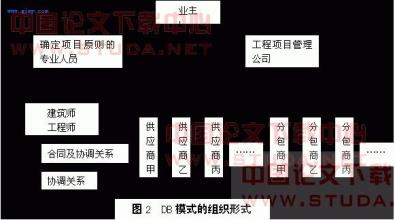
As a manager or business operator, what would you do to increase your productivity and profitability? 也许黄先生可以采用联想同样的战略——那就是买一个像IBM这样的知名品牌。如果我有个企业,我也会采取这种方法。只要目标公司有利可图,我们会筹集更多的资金来获取。公司越有投资价值,越容易筹款收购。我们现在谈的是提高生产效率和利润率,而不是削减成本。作为一个经理人或企业经营者,您怎样提高生产效率和利润率呢?
 爱华网
爱华网